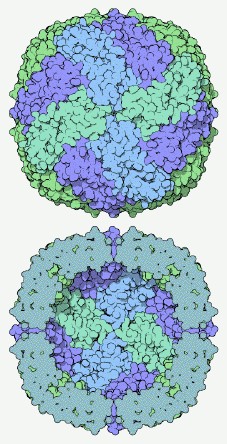Plastic electronics offers the possibility of making devices like flat screen displays, solar cells and logic circuits from semiconducting polymers, exploiting low-cost polymer processing techniques to make devices cheaply, in very large areas, on flexible substrates. But the existing technologies with which these would-be disruptive technologies are competing are also evolving very fast. It is in this context that the news that Covion Organic Semiconductors has been bought by the German chemical company Merck (press release here), for 50 million euros in cash is rather interesting. Covion is one of the few companies that has been attempting to make a business making the semiconducting polymers that will be used in flat-panel displays from light emitting polymers, while Merck is the world’s largest producer of the liquid crystals used in flat panel liquid crystal displays.
This news led to a little bit of interest in the chemical industry trade press, as another part of the process in which the privately held speciality chemical company Avecia is gradually being liquidated. Covion was wholly owned by Avecia, and the deal includes Avecia’s research effort in organic semiconductors. But there are a couple of lessons for nanotechnology businesses to learn here .
The first is simply how difficult it can be for new technologies to catch up with the rapid, incremental development of existing technologies. You don’t need a lot of research to see how rapidly the liquid crystal display industry has been developing; a few trips to the mall suffice to convince one that liquid crystal display TVs, which only a few years ago were an expensive curiosity, are plummeting in price and growing in area. Thus two out of the three main potential advantages of polymer light emitting diode displays – cost, and the ability to make large areas – are rapidly eroding. As the Merck Chairman Bernhard Scheuble is quoted as saying in the press release ,“It is apparent that liquid crystal displays will be the dominant flat-panel technology for some years to come … We see this acquisition as an opportunity to explore alternative technologies for the future, which is a prudent step for any market leader.”
It’s also interesting to look at Merck’s liquid crystal business, with which Covion will be integrated. Although this probably wouldn’t be generally recognised as a nanotechnology business, and it is certainly not described as one by Merck, it has some features that make it rather a good model for successful nanotech firms in the future. Its major product is a class of molecules whose value depends on the rather subtle nanoscale arrangements these molecules take up, and the way in which those arrangements are altered by interactions with a nanostructured surface and with applied fields. The business is large – sales are in excess of half a billion euros – but the physical quantity of material produced is tiny. I’d guess that the total annual world production of liquid crystals is less than one hundred tonnes, an amount that would fit into a couple of double garages. Most of us have some of this product in our houses, in our offices, in our cell-phones and laptops, but in miniscule quantities. And the business is stunningly profitable, with a return on sales of more than 50%. Why should it not be so? They’re selling combinations of mostly carbon, nitrogen, hydrogen and oxygen for a huge price which reflects, not the cost of the material or the cost of production, but the cost of the research and development, and the functional value that a tiny amount of the material can add to a desirable product.
